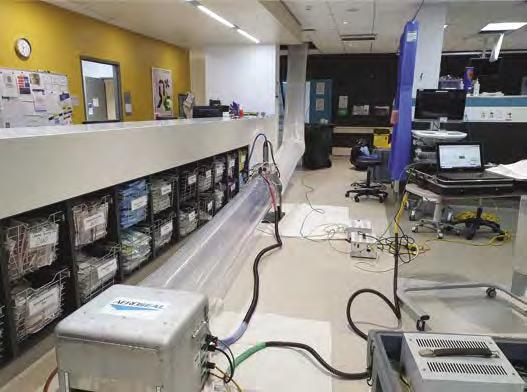
2 minute read
Classic cool
from HVAC&R News June-July 2022
by AIRAH
A COMPRESSED HISTORY

Advertisement
Some people collect cars, others collect coins. John Zammit collects refrigeration compressors.
Walk into John Zammit’s wholesale store in Ballarat and you will be greeted by an unusual sight: a collection of old refrigeration compressors that have all been restored lovingly to their original condition. “It’s colourful,” says Zammit. “Greens, blues and reds. It just brightens up the whole showroom.”
COLD CALLING
It started when Zammit’s son bought a business in Harrow, Victoria, and found an old Coldstream compressor on the premises. John did it up.
“One of my other customers was telling me it should be grey, not blue,” he remembers. “There was a debate, and someone said that Larry Ford at RMIT would know. So I rang Larry and he said that originally they were grey and then they turned it blue to compete with the Kelvinator.”
Case closed. But then Ford came back with a request of his own. He had been in touch with June Salter, whose late father Colin Glover was a refrigeration engineer. Glover’s workshop of old equipment was in danger of heading for the scrap heap if she couldn’t find it a home.
“We ended up getting three ute-loads,” says Zammit. “They were in pretty good condition. Of course, they had to be sprayed and whatever. But he had an extraordinary collection. It would have been a shame to chuck it out.” still gassed up, many couldn’t be restored to working condition. Nevertheless, Zammit stripped them, sanded them, cleaned them, repainted them in the original colours, and polished up the brass and copper.
“It takes a bit of work but it’s fun doing it,” he says. “It brings back a lot of memories. All the old fridgies come in and love it. The young blokes go what’s all this shit – they haven’t got a clue!”
PAY RATES IN 1950
Although a lot of the brand names have changed, Zammit says the technology is fundamentally the same. Interestingly, he’s also been able to compare fridgies’ earnings.
As well as equipment, Zammit recovered old manuals and documents from Colin Glover’s workshop. Some of these show that the rate charged in the ’60s and ’70s was two pounds an hour. In today’s money, that equates to $108 an hour.
Zammit hopes that one day the compressors might be donated to a museum – ideally one in Geelong to commemorate Australia’s godfather of refrigeration, James Harrison.
“It’s got to be done in Geelong, because that’s where everything originated from,” he says. “If they do open it, I’d gladly give all this stuff.” In the meantime, if you are passing by JZ’s Wholesalers in Ballarat, take a moment to stop and get a very cool history lesson. ■








